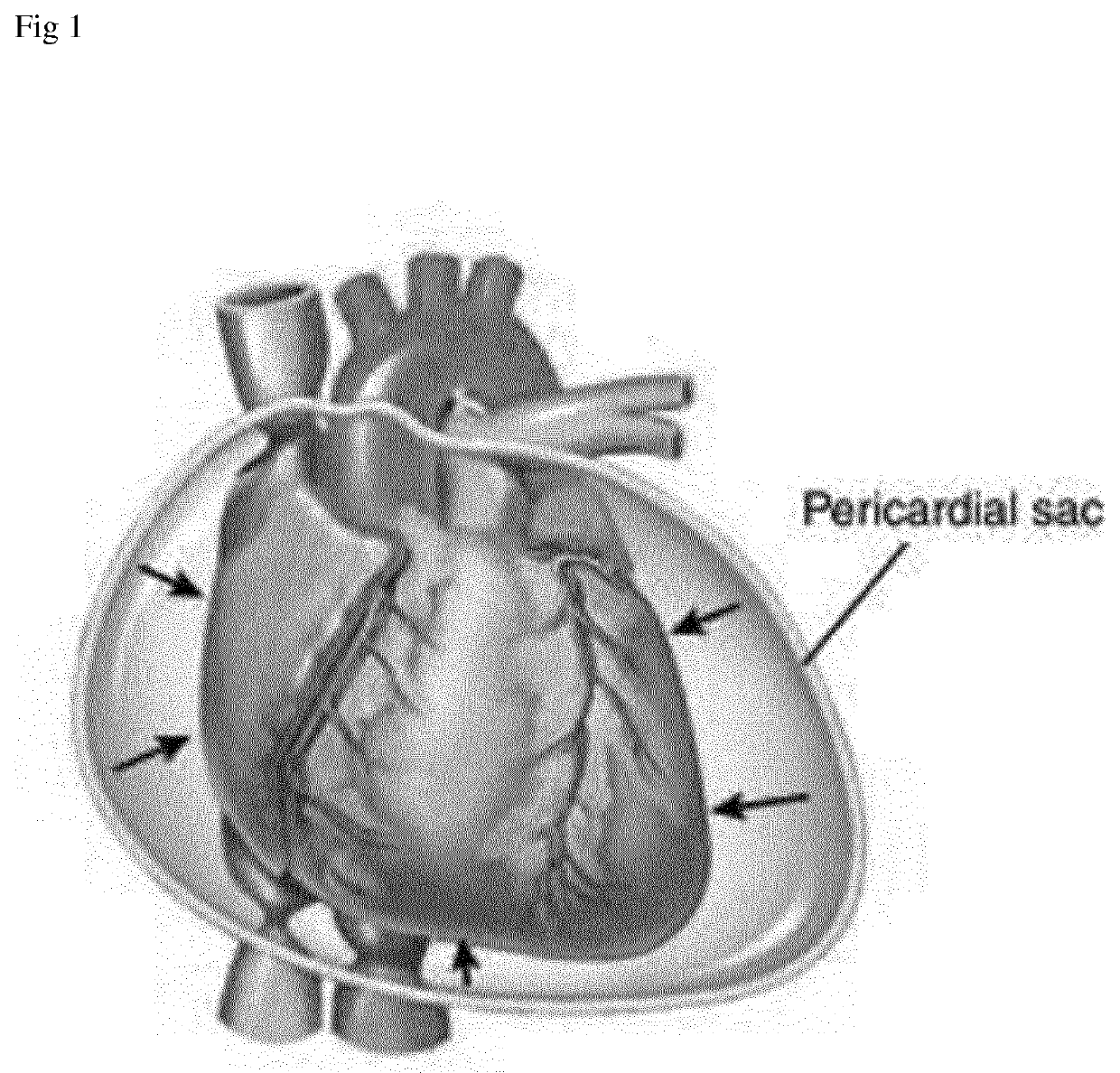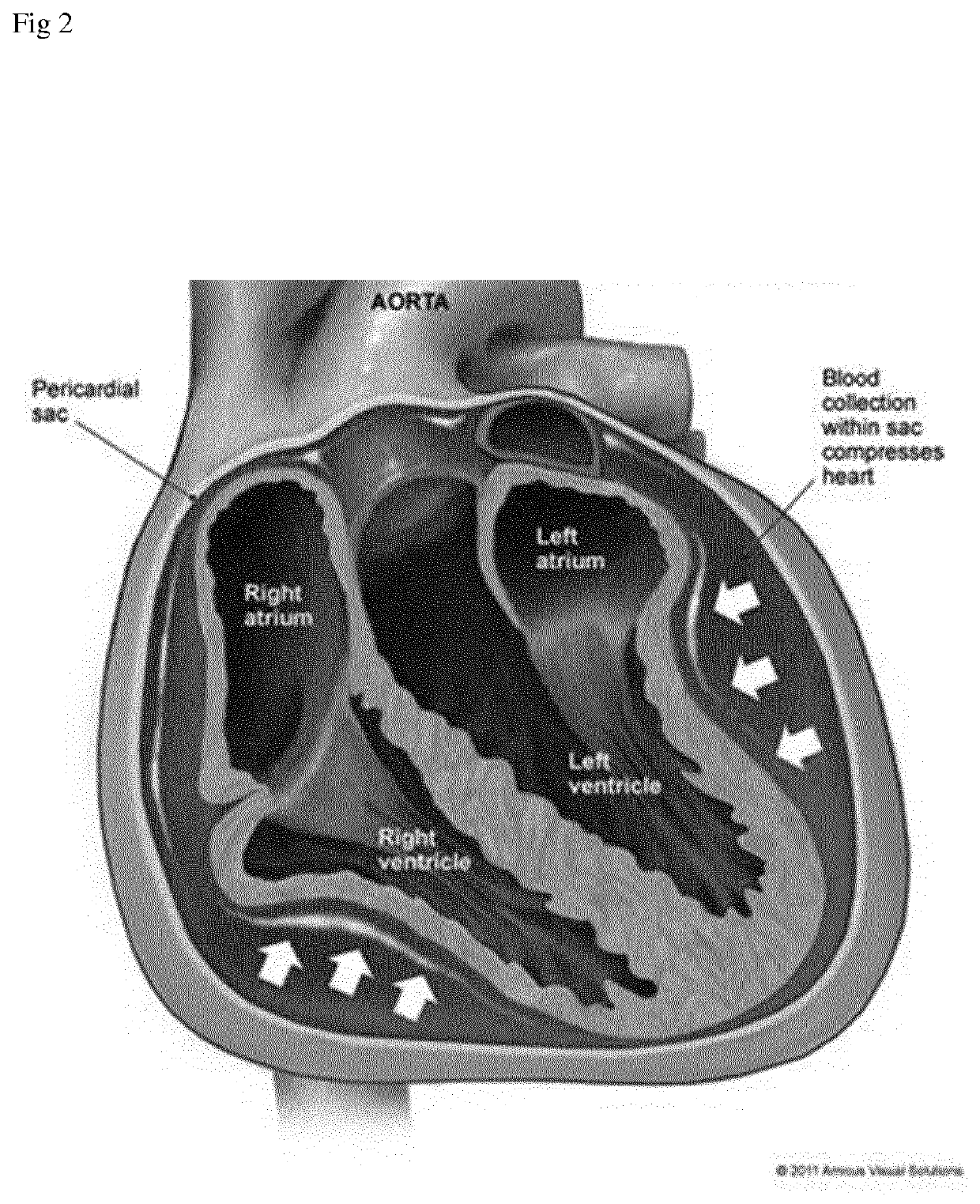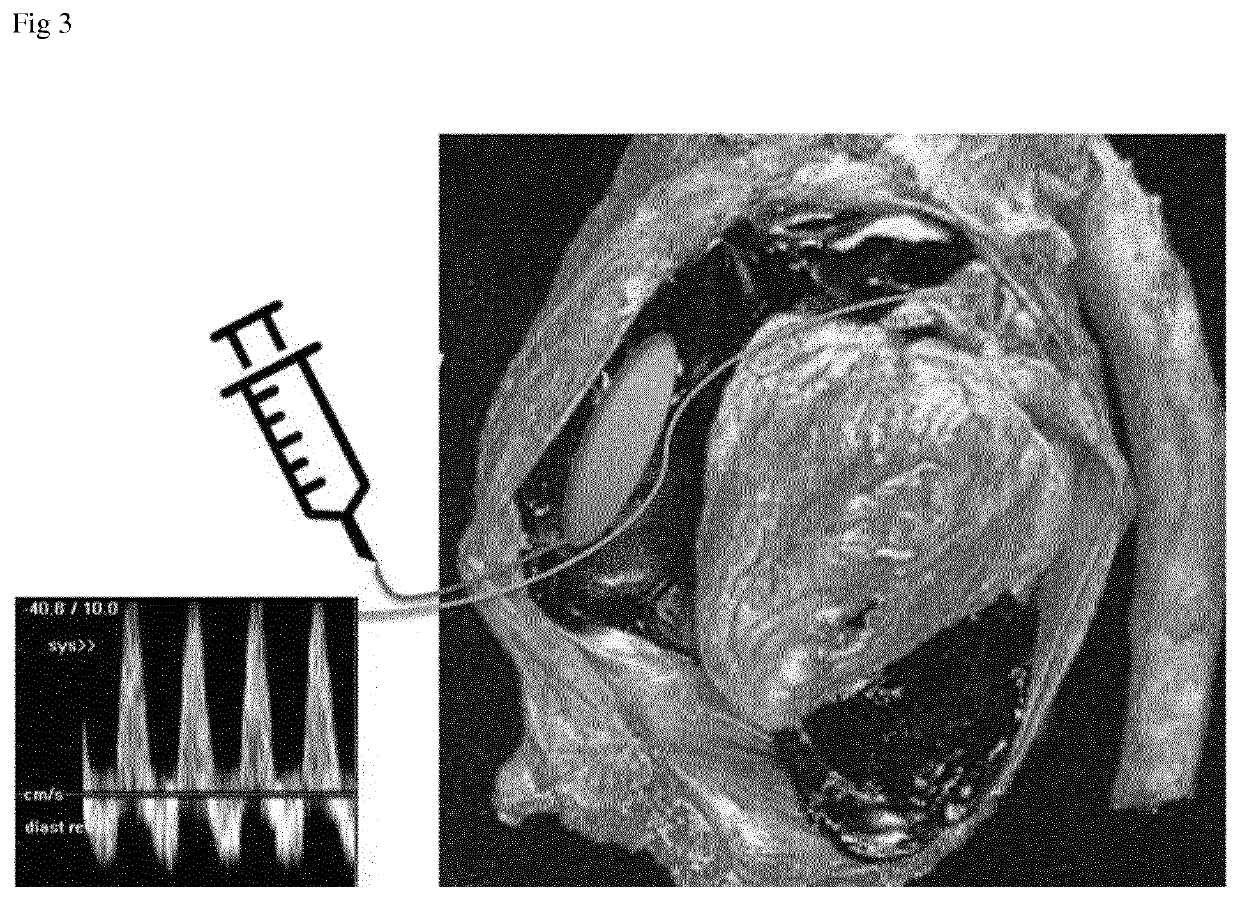Device and Method for Diagnosis of Cardiac Tamponade
a technology for cardiac tamponade and diagnostic equipment, applied in the field of diagnostic equipment for cardiac tamponade, can solve the problems of high level of expertise, complication risk, failure to give meaningful parameters,
- Summary
- Abstract
- Description
- Claims
- Application Information
AI Technical Summary
Benefits of technology
Problems solved by technology
Method used
Image
Examples
Embodiment Construction
[0023]The present invention provides a system comprising a probe, suitably easy to insert during surgery and placed during surgery on the aorta or the pulmonary artery bifurcation under the aortic arch. The probe allows monitoring of velocity of blood by measuring a Doppler signal of the velocity of the blood cells in the left or right ventricular outflow tract respectively. The blood flow out of the heart can therefore be determined, and thus cardiac output may be calculated by multiplying the volume of blood flowing through the outflow tract (the stroke volume) by the patient's heart rate. In particular, the cardiac output variation can be determined in response to the inflation of an expandable balloon, inserted into the pericardial space, mediastinal space, behind the sternum, or behind the heart, which can be inflated by, for example, a known volume of fluid. Inflation of the balloon creates an artificial tamponade and will at some point impact the ability of the heart to pump ...
PUM
 Login to View More
Login to View More Abstract
Description
Claims
Application Information
 Login to View More
Login to View More - R&D
- Intellectual Property
- Life Sciences
- Materials
- Tech Scout
- Unparalleled Data Quality
- Higher Quality Content
- 60% Fewer Hallucinations
Browse by: Latest US Patents, China's latest patents, Technical Efficacy Thesaurus, Application Domain, Technology Topic, Popular Technical Reports.
© 2025 PatSnap. All rights reserved.Legal|Privacy policy|Modern Slavery Act Transparency Statement|Sitemap|About US| Contact US: help@patsnap.com



